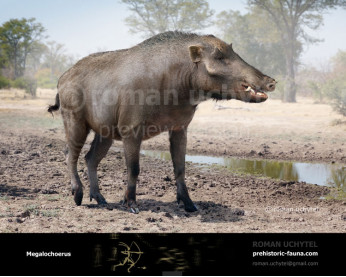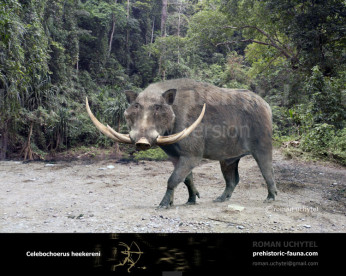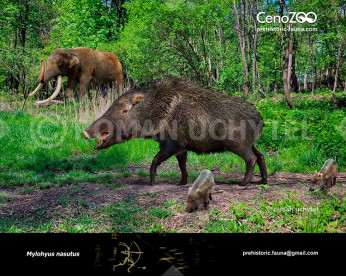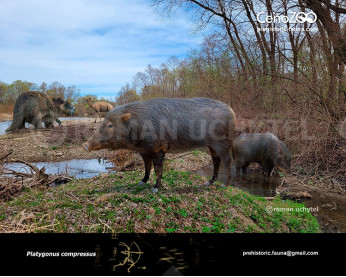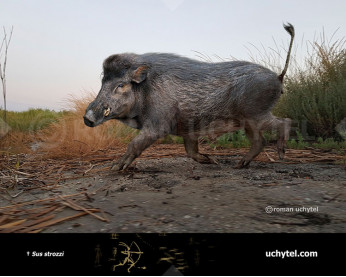Notochoerus
552552
Notochoerus (Notochoerus (Broom, 1925))
Order: Artiodactyla
Family: Suidae
Subfamily: †Tetraconodontinae
Expansion and period of existence: the Plio-Pleistocene of Africa
Dimensions: length - 210 cm, height - 130 cm, weight - 250-450 kg.
Members of the Family Suidae are among the most studied in the Plio-Pleistocene vertebrate fossil record of Africa. The fossil evidence indicates that Notochoerus euilus appeared as early as 3.76 Ma and were among the largest pigs ever, with adults weighing up to 450 kg. There is now strong evidence for the possibility of a cladistic mode of origin for N.euilus.
Fossils have been found in Africa, notably Uganda and Ethiopia. These pigs were likely derived from the genus Nyanzachoerus. Like other tetraconodontine pigs, the males had ornamental growths on their skulls, formed from enamel.
Payment
You may use multiple payment methods to buy image such as credit cards, PayPal and bank transfer.
Notochoerus (Notochoerus (Broom, 1925))
Order: Artiodactyla
Family: Suidae
Subfamily: †Tetraconodontinae
Expansion and period of existence: the Plio-Pleistocene of Africa
Dimensions: length - 210 cm, height - 130 cm, weight - 250-450 kg.
Members of the Family Suidae are among the most studied in the Plio-Pleistocene vertebrate fossil record of Africa. The fossil evidence indicates that Notochoerus euilus appeared as early as 3.76 Ma and were among the largest pigs ever, with adults weighing up to 450 kg. There is now strong evidence for the possibility of a cladistic mode of origin for N.euilus.
Fossils have been found in Africa, notably Uganda and Ethiopia. These pigs were likely derived from the genus Nyanzachoerus. Like other tetraconodontine pigs, the males had ornamental growths on their skulls, formed from enamel.

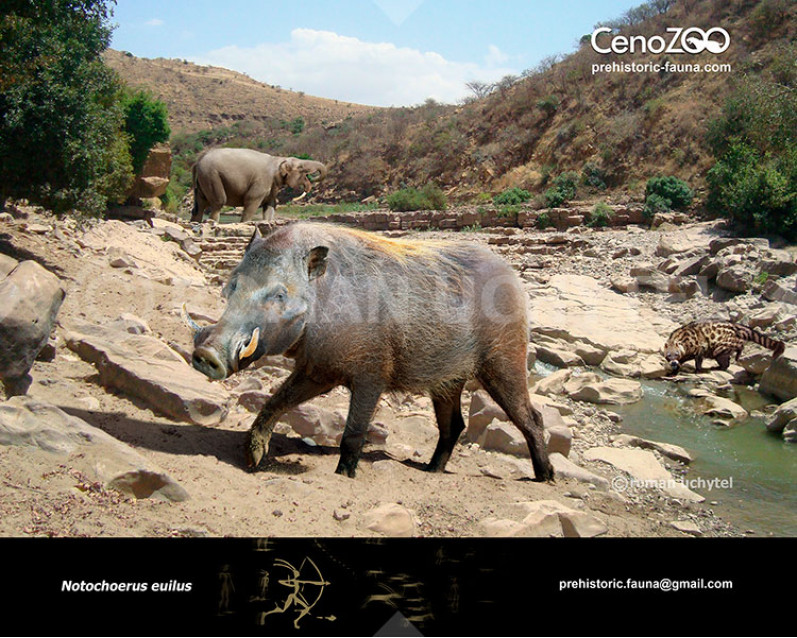
-797x638.jpg)
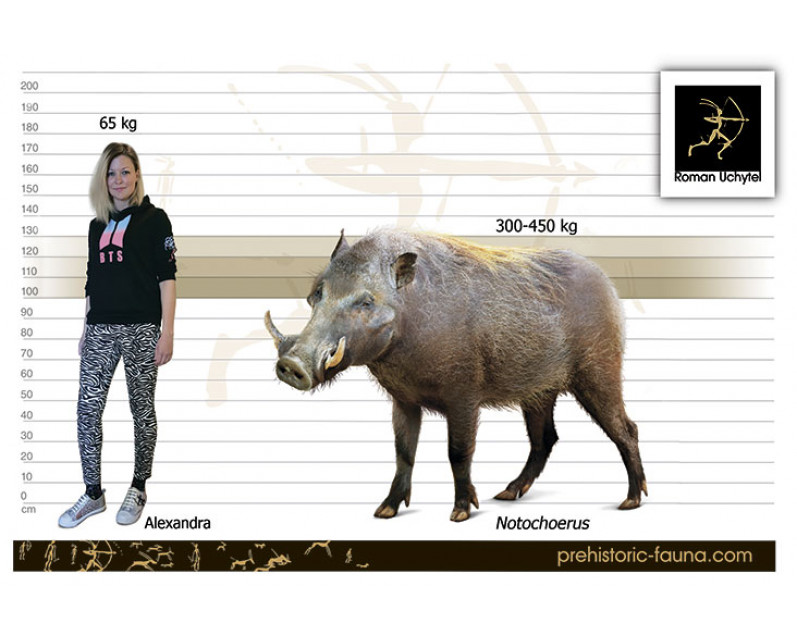

-70x56.jpg)

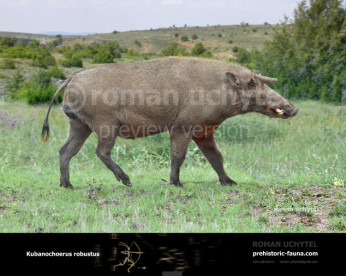
-346x277.jpg)
